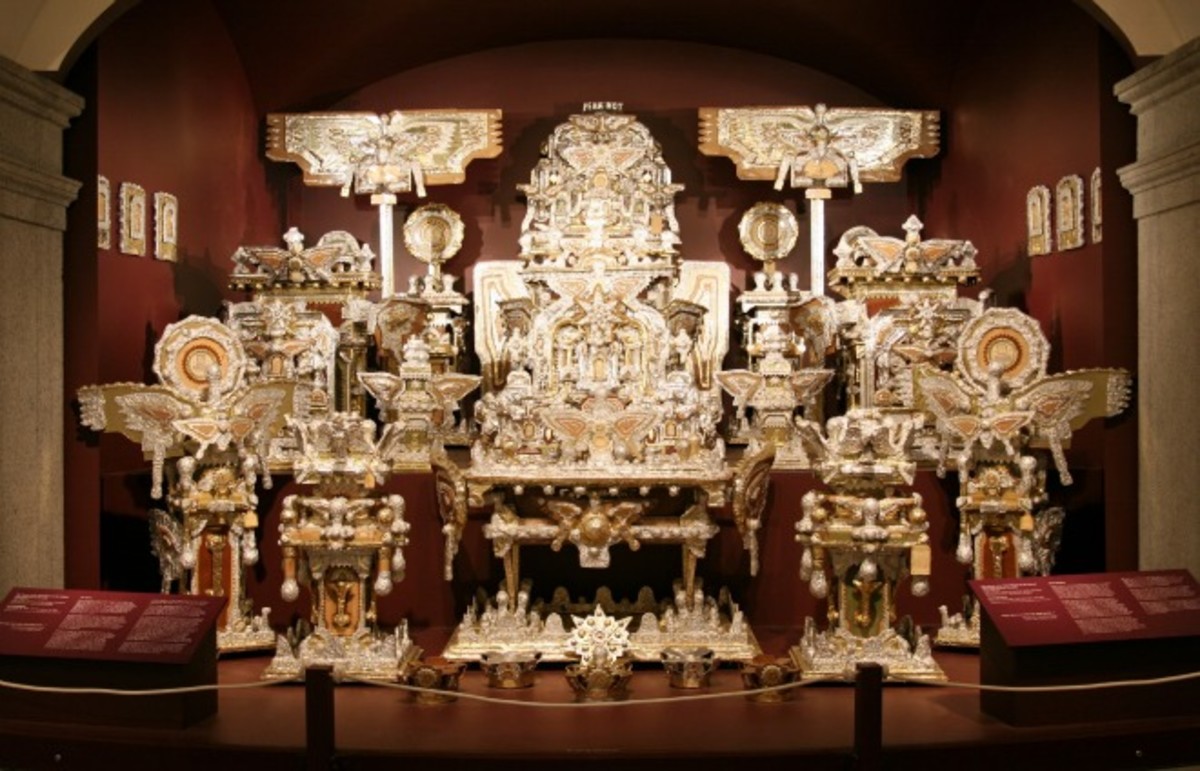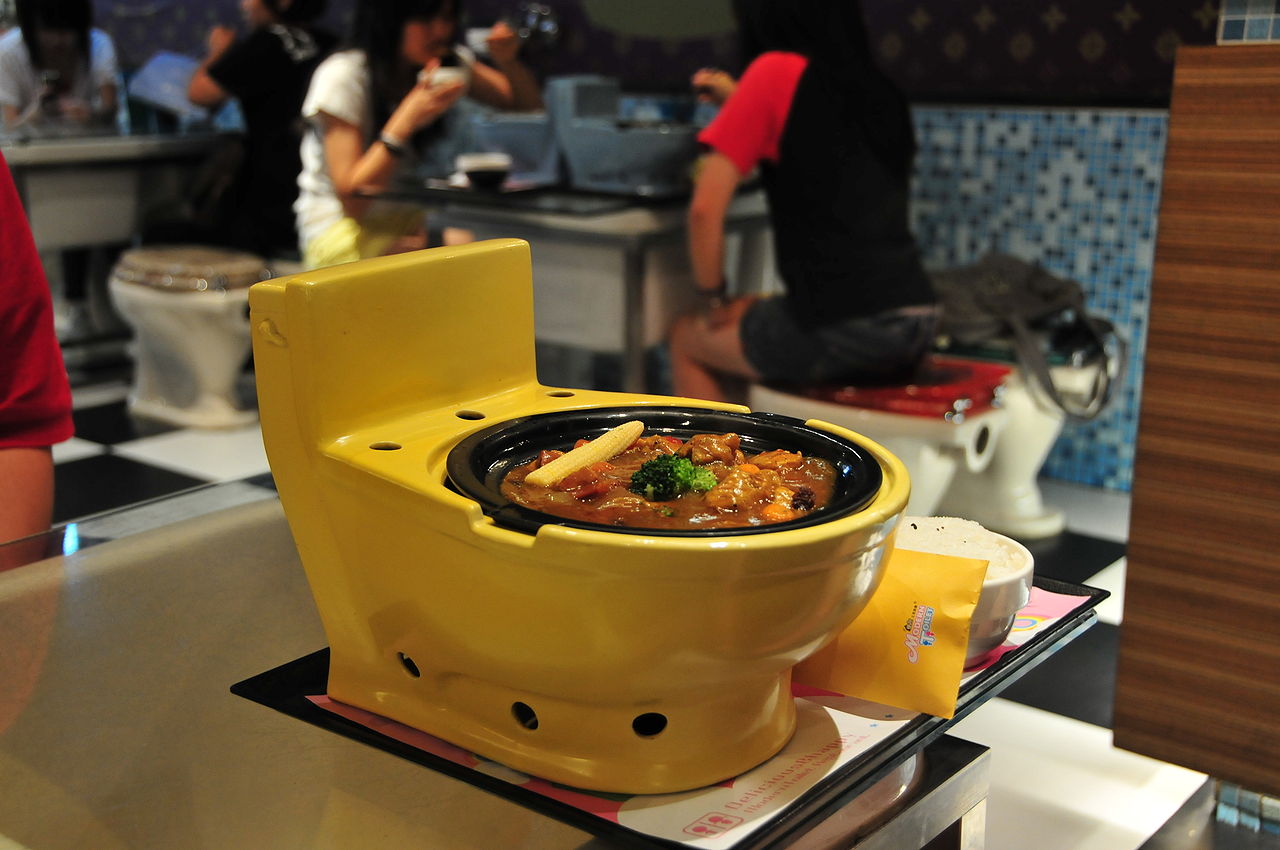
Between 1950 and 1964, Meyer Wertlieb rented a garage in Washington D.C. to James Hampton, a janitor who worked at the General Services Administration. When Hampton died, Wertlieb opened the garage and found a throne.
Hampton, the son of a minister, had been born in South Carolina in 1909. In 1928 he moved to Washington to share an apartment with his older brother, and in 1931 God and his angels told him to make a throne for the second coming of Jesus Christ. Working for hours in the middle of each night, he spent 14 years building what he called “The Throne of the Third Heaven of the Nations’ Millennium General Assembly,” piecing it together from aluminum foil and cardboard boxes, jelly jars and light bulbs. God visited him regularly to check on his progress.
Eventually it was 7 feet tall and occupied 300 square feet. When Hampton died, his sister rejected it, and it now stands in the Smithsonian American Art Museum. Stephen Jay Gould wrote, “I am not an art historian. I will make no aesthetic interpretation or judgment beyond a purely personal statement that Hampton’s Throne stunned and delighted me when I happened upon it by accident during a coffee break from a meeting at the Smithsonian, and it has never failed, upon many subsequent and purposeful visits, to elicit the same pleasure and awe.”
(If that’s not interesting enough, Hampton left behind a 70-page notebook that no one has ever deciphered.)







